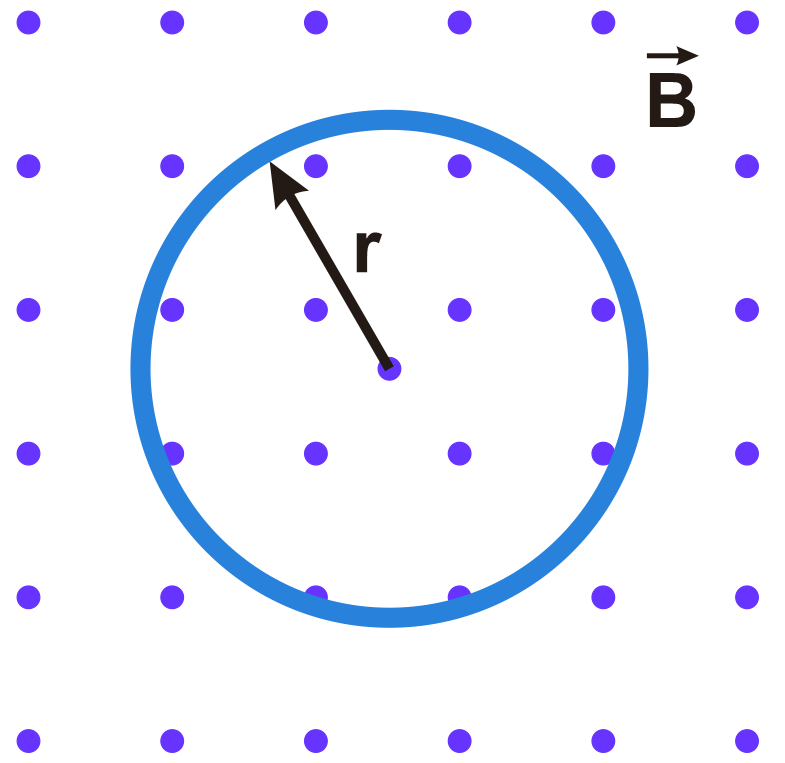Ch 29: Electromagnetic Induction
Chapter 29, Problem 29
A circular loop of wire is in a region of spatially uniform mag-netic field, as shown in Fig. E29.15. The magnetic field is directed into the plane of the figure.

 Verified Solution
Verified SolutionVideo duration:
5m1199
views
Was this helpful?
Video transcript
Related Practice
Textbook Question
The magnetic field B at all points within the colored circle shown in Fig. E29.15 has an initial magnitude of 0.750 T. (The circle could represent approximately the space inside a long, thin solenoid.) The magnetic field is directed into the plane of the diagram and is decreasing at the rate of -0.0350 T/s. (e) If the ring is cut at some point and the ends are separated slightly, what will be the emf between the ends?
322
views
Textbook Question
A long, straight solenoid with a cross-sectional area of 8.00 cm^2 is wound with 90 turns of wire per centimeter, and the windings carry a current of 0.350 A. A second winding of 12 turns encircles the solenoid at its center. The current in the solenoid is turned off such that the magnetic field of the solenoid becomes zero in 0.0400 s. What is the average induced emf in the second winding?
1342
views
1
rank
Textbook Question
The magnetic field B at all points within the colored circle shown in Fig. E29.15 has an initial magnitude of 0.750 T. (The circle could represent approximately the space inside a long, thin solenoid.) The magnetic field is directed into the plane of the diagram and is decreasing at the rate of -0.0350 T/s. (d) What is the emf between points a and b on the ring?
418
views
Textbook Question
The current in Fig. E29.18 obeys the equation I(t) = I_0e^(-bt), where b > 0. Find the direction (clockwise or counterclockwise) of the current induced in the round coil for t > 0.
419
views
1
rank
Textbook Question
A circular loop of wire with radius r = 0.0480 m and resistance R = 0.160 Ω is in a region of spatially uniform magnetic field, as shown in Fig. E29.22. The magnetic field is directed out of the plane of the figure. The magnetic field has an initial value of 8.00 T and is decreasing at a rate of dB/dt = -0.680 T/s. (a) Is the induced current in the loop clockwise or counterclockwise?
673
views
Textbook Question
In a physics laboratory experiment, a coil with 200 turns enclosing an area of 12 cm^2 is rotated in 0.040 s from a position where its plane is perpendicular to the earth's magnetic field to a position where its plane is parallel to the field. The earth's magnetic field at the lab location is 6.0*10-5 T. (b) What is the average emf induced in the coil?
461
views
